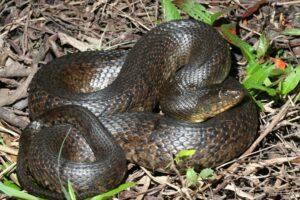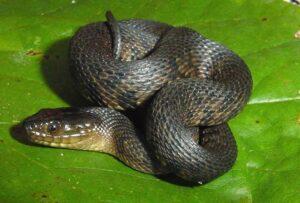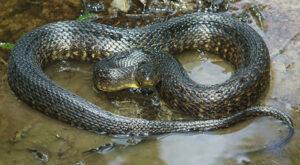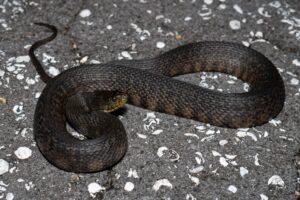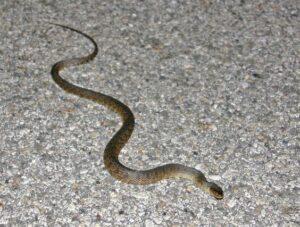The green water snake, also known by the name Mississippi green water snake, is a colubrid of medium size, heavy body, and dark greenish-brown color. The semi-aquatic snake is endemic to the south-eastern United States.
Scientific Classifications
- Suborder:Serpentes
- Family:Colubridae
- Genus:Nerodia
- Species:N. cyclopion
Conservation Status
Description
Size
The average length of the Mississippi green water snake is 76-140 cm (30-35 inches), including the tail.
Color and Appearance
The dorsal side of the snake’s body is dark green, brown, or olive, while the ventral side is 1/3 rd yellow in the front. The remaining part is brown with white or yellow semicircular patterns.
It has a distinctive row of scales between its eye and lip plates that differentiates it from other species of Nerodia. Its dorsal scales and keeled and anal plate is divided.
Are They Dangerous to Humans
When approached, the snake flees for shelter. But when cornered, it doesn’t hesitate to strike. If pinned or grabbed, it readily bites in defense and releases a foul-smelling musk from a pair of glands at the base of its tail. Still, being non-aggressive and avoiding contact with humans, this species is not dangerous.
Green Water Snakes at a Glance
Distribution
You will find it in the region extending from the Florida panhandle westwards to Louisiana and northwards through the Mississippi Valley to Southern Illinois. More precisely, you will find it in south-west Alabama, north-west Florida, south-west Indiana, southern Illinois, south-east Arkansas, western Kentucky, southern Mississippi, western Tennessee, Louisiana, south-east Missouri and south-east Texas.
Lifespan
On average, the snake lives for 15-30 years.
Predators
Large shore birds and other snakes.
Source
static.inaturalist.org, thies-times.com, msherps.com, i.pinimg.com, 2.illinois.gov

